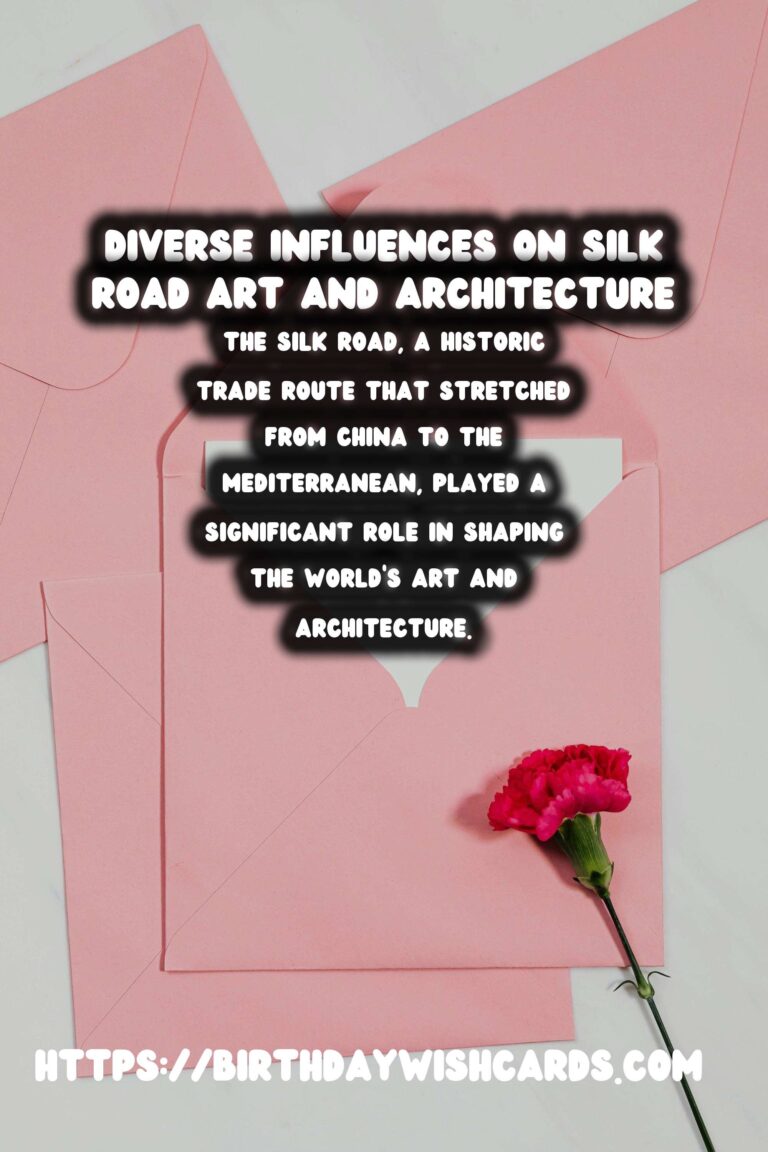
The Silk Road, a historic trade route that stretched from China to the Mediterranean, played a significant role in shaping the world’s art and architecture. Spanning numerous cultures, it facilitated not just trade in goods but also in ideas and artistic expressions, leading to an unprecedented exchange between East and West.
The Birth of Cross-Cultural Art
The Silk Road’s network was a melting pot where diverse civilizations met and exchanged philosophical, religious, and artistic ideas. The art that emerged from this region was a blend of Greco-Roman, Persian, Indian, and Chinese influences. This amalgamation gave birth to unique artistic expressions that were characterized by a mix of realism and symbolism.
For instance, Buddhist art was profoundly influenced by Greek art after Alexander the Great’s incursions into Asia. The Gandhara region, located in present-day Pakistan and Afghanistan, saw the first depictions of the Buddha in human form, borrowed from Greek sculptural techniques.
Architectural Innovation
Along with art, architecture on the Silk Road also experienced significant changes. As caravans moved along the route, they left behind traces of their respective architectural styles. This led to the emergence of new architectural forms, where styles such as Romanesque, Indian rock-cut temples, and Chinese pagodas began to share common elements.
The architecture in Silk Road cities such as Samarkand and Bukhara showcases intricate tile work and majestic arches, a result of Islamic influence merging with local traditions. Registan Square in Samarkand is a testament to this blending, with its striking blue tiles and Islamic geometric designs.
The Role of Religion
Religions also played a crucial role in shaping the artistic landscape of the Silk Road. As Buddhism, Christianity, and Islam spread along the trade routes, they brought with them distinct styles. Buddhist stupas evolved into pagodas in China, while early Christian mosaics influenced Islamic architectural decoration techniques.
These religious influences resulted in the creation of spectacular religious monuments. The Mogao Caves in Dunhuang, China, for example, are home to a treasure trove of Buddhist art and were an important stop for monks and pilgrims traveling to seek spiritual enlightenment.
The Legacy of the Silk Road
The enduring legacy of the Silk Road is its testament to the power of cultural exchange. The art and architecture that emerged from the Silk Road continue to inspire modern artists and architects around the world. It’s a reminder of the world’s interconnectedness and the rich cultural tapestries that define our global heritage.
Today, efforts are being made to preserve this rich history through restoration projects and international cooperation, underscoring the Silk Road’s importance not just as a trade route but as a catalyst of human history’s creative endeavors.
The Influence in Modern Art and Architecture
Modern artists and architects often draw inspiration from the Silk Road’s art and architecture. The fusion of diverse styles in contemporary works continues to reflect the blending nature of this historic route. Exhibits and museums around the world celebrate these influences, emphasizing the global impact of the Silk Road on contemporary design.
Moreover, the Silk Road is a source of inspiration for initiatives promoting cultural understanding and cooperation, showcasing how art and architecture can serve as powerful bridges across different cultures.
The Silk Road, a historic trade route that stretched from China to the Mediterranean, played a significant role in shaping the world’s art and architecture. Modern artists and architects often draw inspiration from the Silk Road’s art and architecture.
#SilkRoad #ArtInfluence

